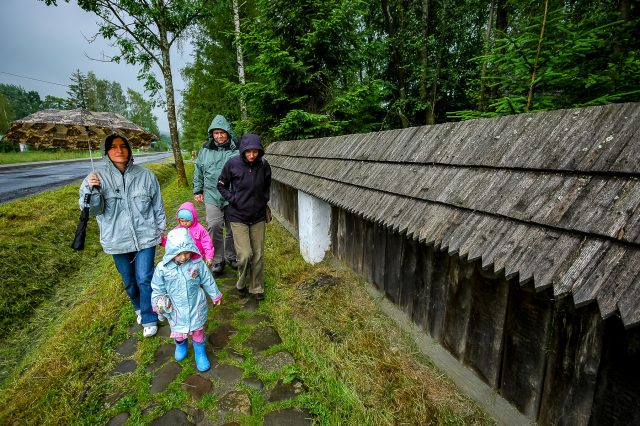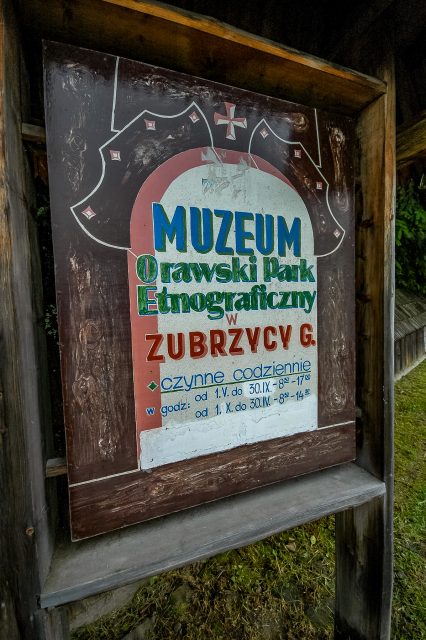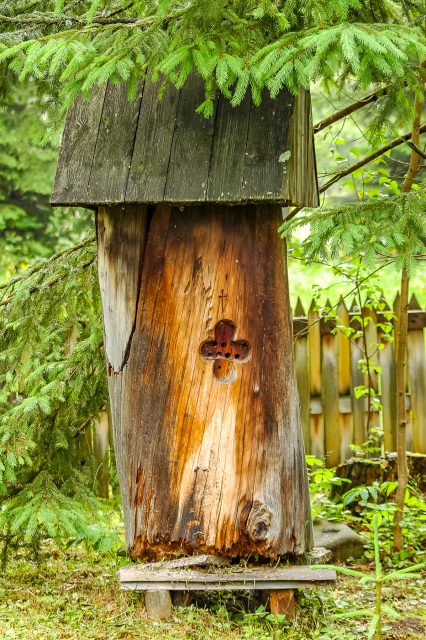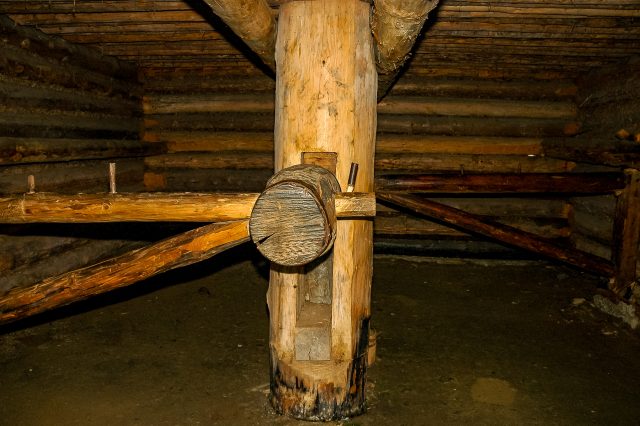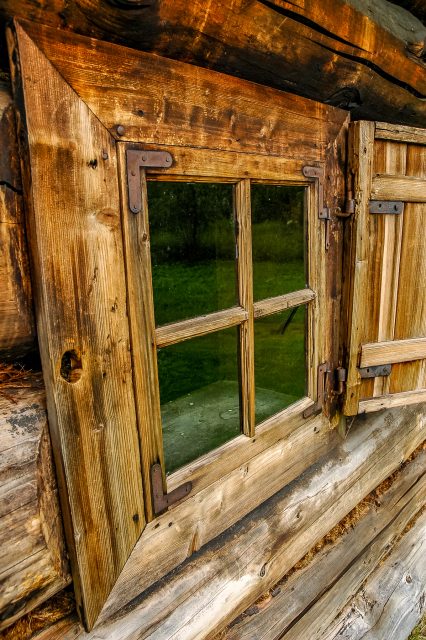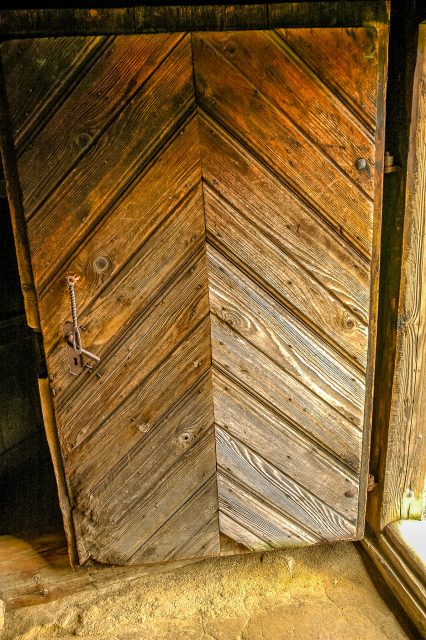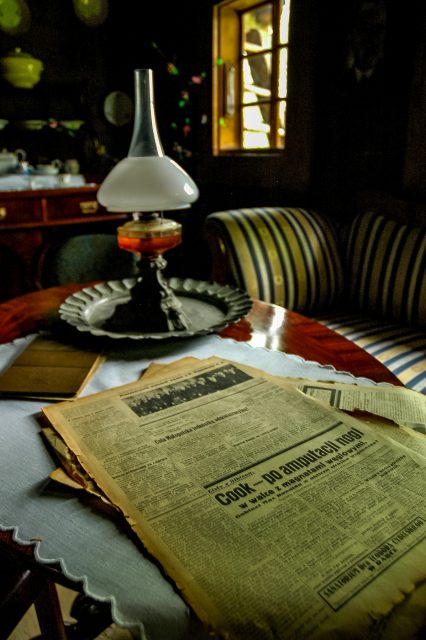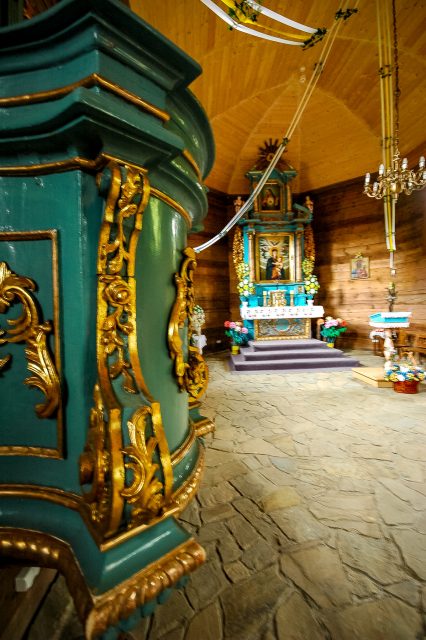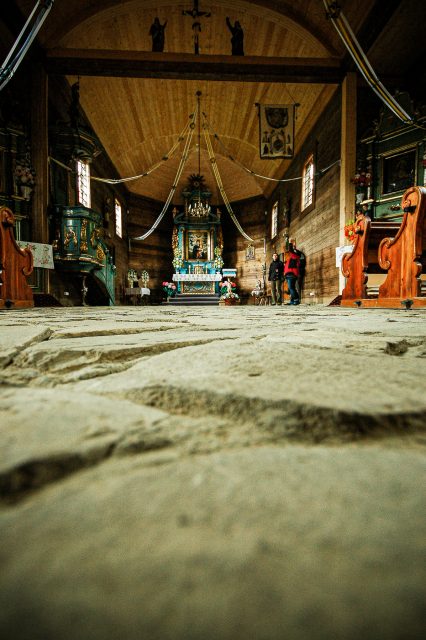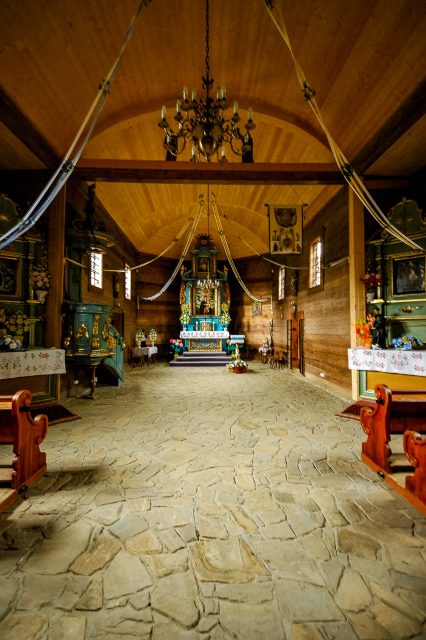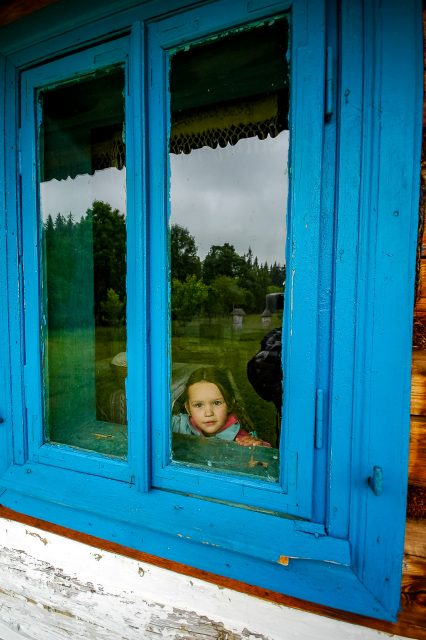We’re reliving the past in more ways than one. The promised sun disappears; plans change.
We end up visiting the outdoor ethnographic museum in Zubrzyca Gorna — for probably the fifth time.
Certainly, it was a different age altogether. Survival was at stake; comfort was an after-thought. That was what Christmas and Easter were for: a few creature comforts.
We wind through the museum, seeing how Polish highlanders kept bees in the eighteenth and nineteenth centuries,
how they made fences (theoretically without nails, but in this particular case, clearly with modern intervention),
and how they forced oil out of flax seeds long before electricity and hydraulics made the task simpler.
In many ways, such a life is enviable. Sure, no Facebook and cell phones, but the slower pace and rough, subsistence living created in everyone an appreciation for what was, and a realistic understanding of the difference between wants and needs.
A roof over one’s head, windows and doors to keep out the cold:
Things we take for granted as we reach for more and more were, at the time, the goal.
Leisure was a thing for the relatively rich. Even then, simple pleasures: reading a month-old newspaper by lamplight.
The same might be said of the soul: spirituality was not something to be squeezed in between recovering from a hang-over and watching the afternoon football game.
I used to be horribly offended at the reality of beautiful churches built in the midst of poverty. “Think how many mouths those resources could feed,” I’d say, as if the body is the only thing that needs nourishment. In the last few years, I’ve come to understand a couple of things: first, these churches were not built at the expense of the poor: usually, the rich subsidized the construction (probably with mixed motivation).
Second, these churches served to provide something of an aesthetic oasis for many. Finally, if one believes in the doctrine of the Real Presence, wouldn’t one want to create the most beautiful house possible?
